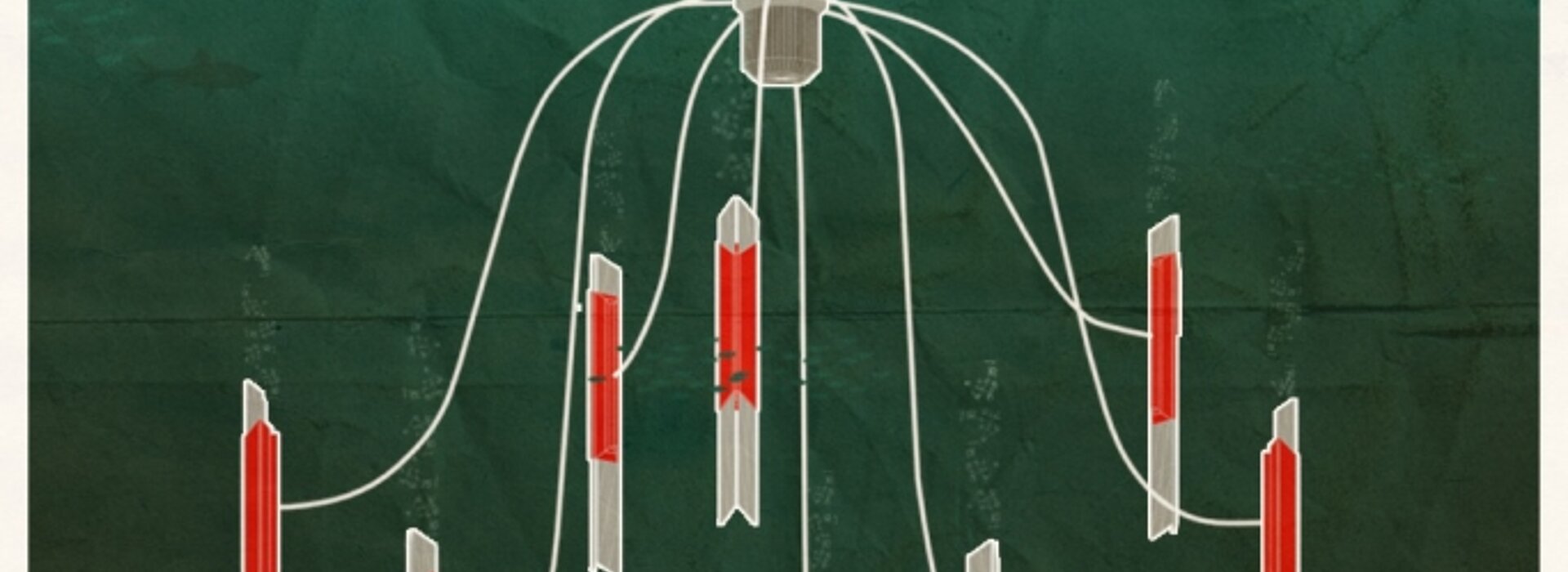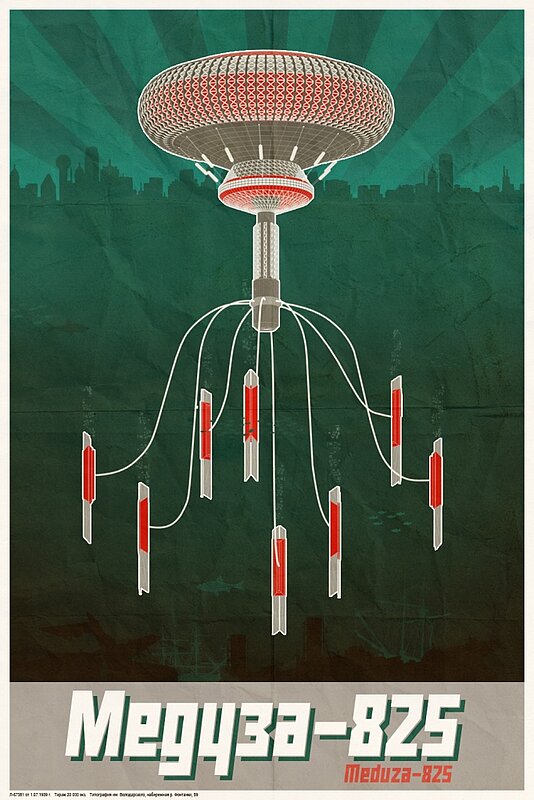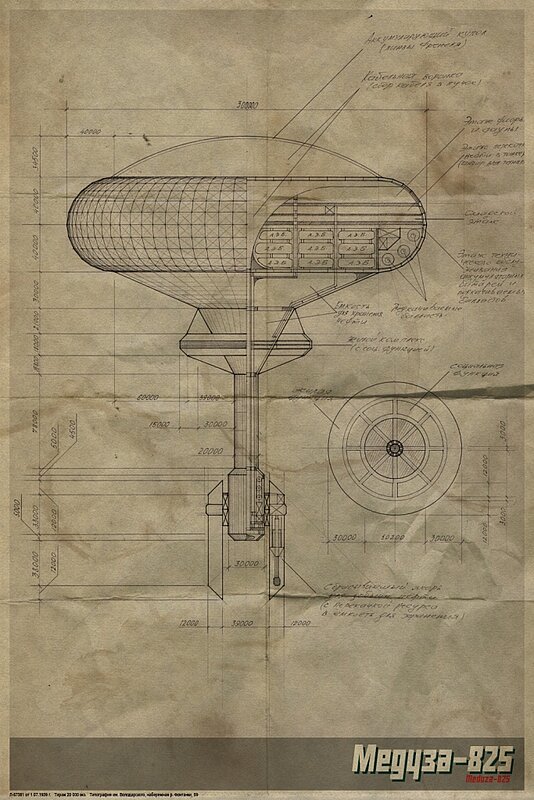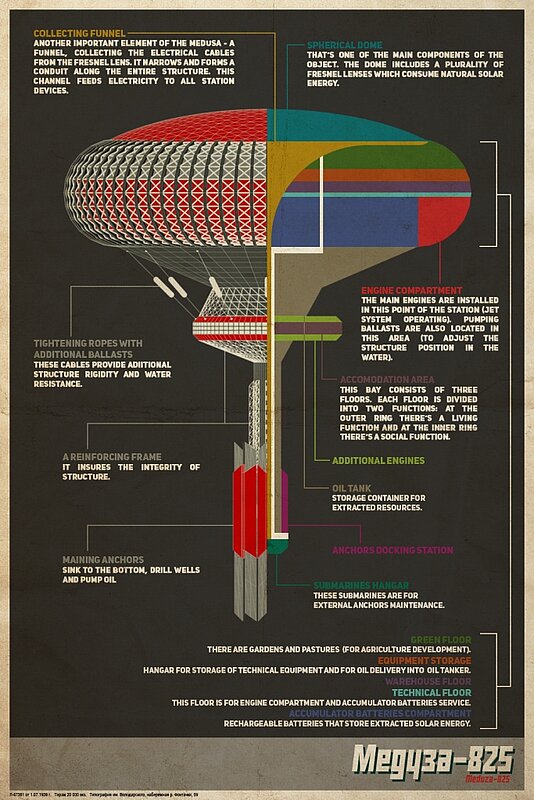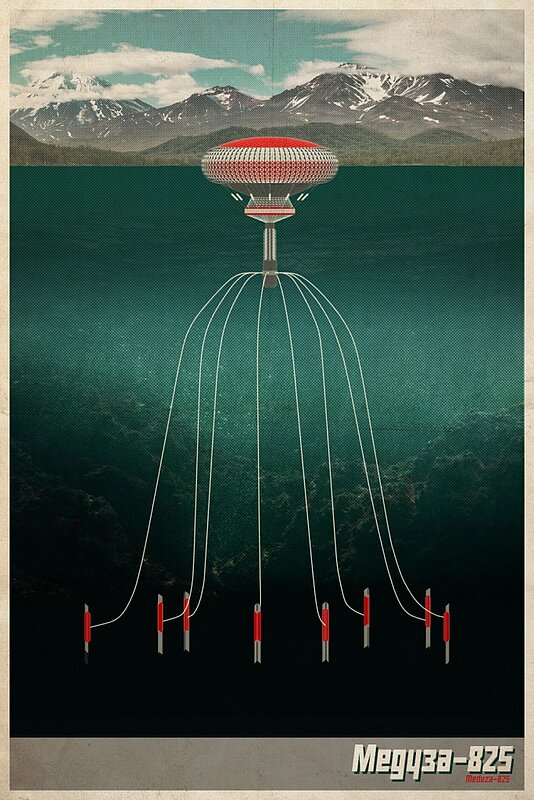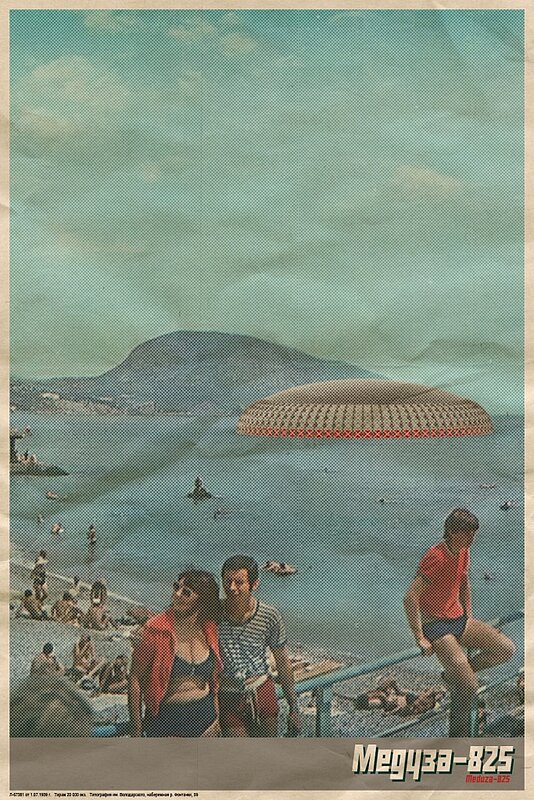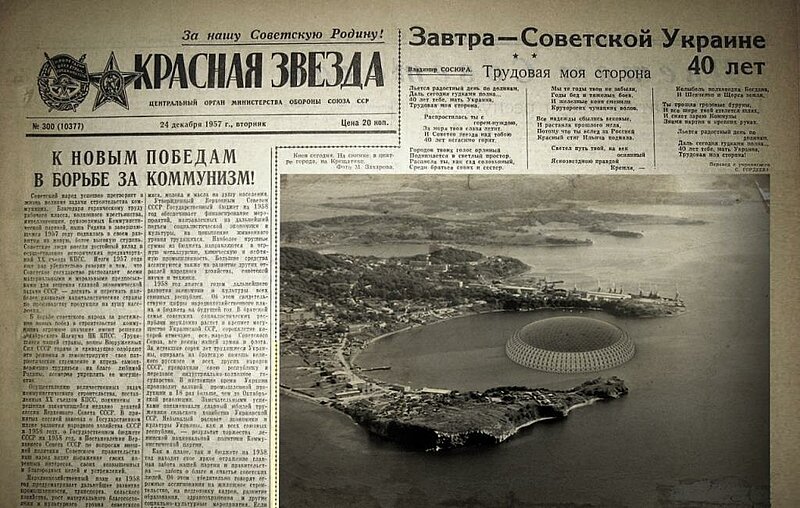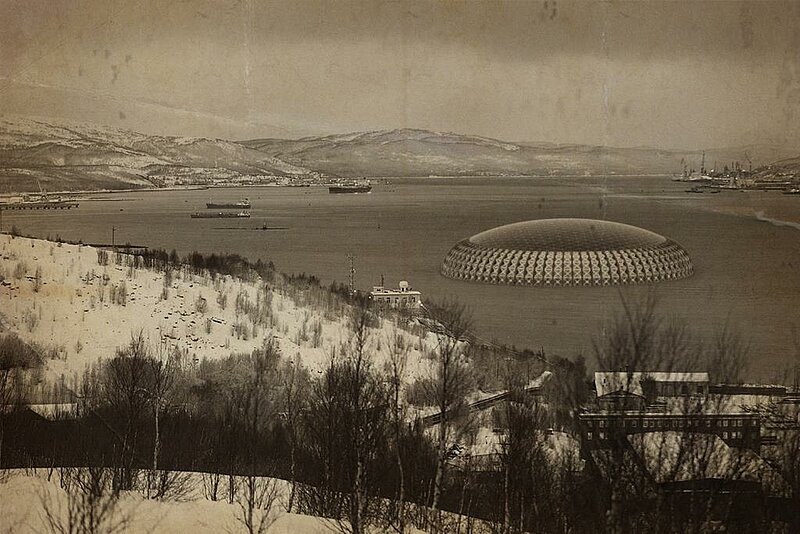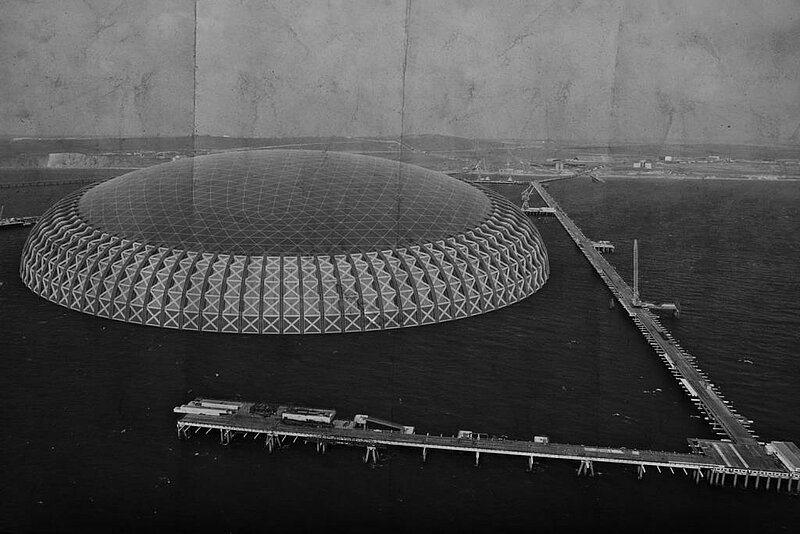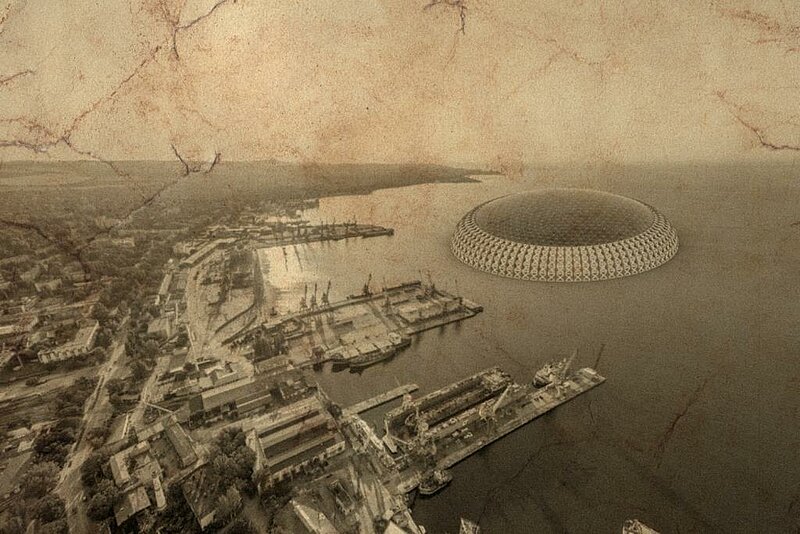Medusa - 825 Socialist City of Geologists on the Water
- Year2015
In 1949 Sergei N. Kovalev with group of soviet scientists developed the project of an Autonomous floating platform-the settlement for the exploration of the seabed. More recently, we have detected the materials for this project; we would like to bring to your attention.
The set of discovered materials includes authentic drawings of the facility, promotional materials and unique photos of the first prototype of a Medusa-825.
Brief description of project partially preserved, and gives a General idea about the structure of the building. The main technical novelty of the object has full autonomy in its long-term operation, achieved by means of solar lenses with a diameter of 300 m. Light energy is thus obtained with very high efficiency, exceeding 85% is used primarily for the exploration and drilling thick layers of oceanic sediments.
Accumulated energy reserves are used for the operation of residential, social and technological modules of Medusa. The object is meant to stay on Board for up to 500 people over six months of work shift.
Social structure includes schools, hospitals, and enterprises of everyday life, cultural objects, and zones of agricultural activity. Also has a mode of operation of the structure as a permanent settlement that provided built-in fishing capacity.
High buoyancy and autonomy of an object involves its smooth functioning in the harsh climate at latitudes inside the Arctic Circle. Thus, the main task of the object's Medusa-825 is engaged in exploration and production of fossil hydrocarbons on the Arctic shelf.
But the working area is not limited to polar latitudes, the conditional radius of the functioning of Medusa is up to 5300 km from the home port. The object is designed for exploration at the sea depth up to 1.5-2 km, with a maximum depth of shelf is 1.5 km away.
Project Medusa-825 is a promising development, during which was created the first working prototype showing the efficiency and reliability after long-term use patterns.
